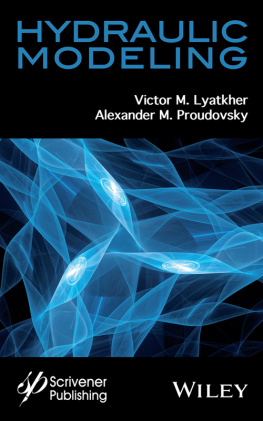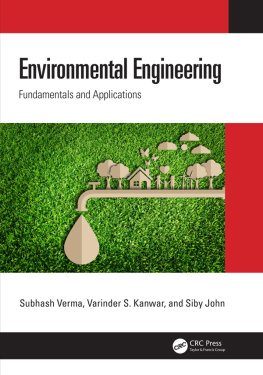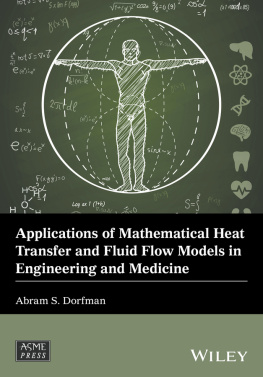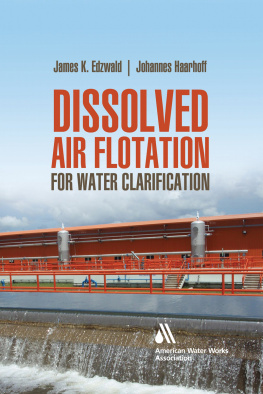Hydraulic Modeling
Scrivener Publishing
100 Cummings Center, Suite 541J
Beverly, MA 01915-6106
Publishers at Scrivener
Martin Scrivener()
Phillip Carmical ()
Copyright 2016 by Scrivener Publishing LLC. All rights reserved.
Co-published by John Wiley & Sons, Inc. Hoboken, New Jersey, and Scrivener Publishing LLC, Salem, Massachusetts.
Published simultaneously in Canada.
No part of this publication may be reproduced, stored in a retrieval system, or transmitted in any form or by any means, electronic, mechanical, photocopying, recording, scanning, or otherwise, except as permitted under Section 107 or 108 of the 1976 United States Copyright Act, without either the prior written permission of the Publisher, or authorization through payment of the appropriate per-copy fee to the Copyright Clearance Center, Inc., 222 Rosewood Drive, Danvers, MA 01923, (978) 750-8400, fax (978) 750-4470, or on the web at www.copyright.com . Requests to the Publisher for permission should be addressed to the Permissions Department, John Wiley & Sons, Inc., 111 River Street, Hoboken, NJ 07030, (201) 748-6011, fax (201) 748-6008, or online at http://www.wiley.com/go/permission .
Limit of Liability/Disclaimer of Warranty: While the publisher and author have used their best efforts in preparing this book, they make no representations or warranties with respect to the accuracy or completeness of the contents of this book and specifically disclaim any implied warranties of merchantability or fitness for a particular purpose. No warranty may be created or extended by sales representatives or written sales materials. The advice and strategies contained herein may not be suitable for your situation. You should consult with a professional where appropriate. Neither the publisher nor author shall be liable for any loss of profit or any other commercial damages, including but not limited to special, incidental, consequential, or other damages.
For general information on our other products and services or for technical support, please contact our Customer Care Department within the United States at (800) 762-2974, outside the United States at (317) 572-3993 or fax (317) 572-4002.
Wiley also publishes its books in a variety of electronic formats. Some content that appears in print may not be available in electronic formats. For more information about Wiley products, visit our web site at www.wiley.com .
For more information about Scrivener products please visit www.scrivenerpublishing.com .
Library of Congress Cataloging-in-Publication Data:
ISBN 978-1-118-94619-0
I appreciate the ability of creating analogies, which, if they are spirited and rational, take us beyond the limits of what the nature wished to open for us, allowing us to anticipate facts before we see them.
J. L. DAlembert, Encyclopedia, (1751)
Introduction
Hydraulic problems, put forward by practice, are very complicated, varied and numerous. This is because there are hydraulic phenomena in a wide range of processes, being typical for all sectors of public activity. Engineering hydraulics acts as the basis of not only water supply, navigation and hydroenergetics but the sciences, for which water movement is the main subject of study. And for heat and nuclear power energetics, hydraulic problems, associated with energy transformation, are no less important than problems of thermodynamics and nuclear physics.
The oldest branch of energetics - wind energetics - operates with the laws of aerodynamics at air speeds much lesser than the sound velocity, when these laws are similar to the laws of hydraulics. The scales of modern energetics are so, that its interaction with the environment has not only local, but also global character. When assessing the impact of energetics on the environment by discovering restrictive measures for limitation of both negative and positive consequences of this impact, it is necessary to provide the forecast of different hydraulic phenomena. The complexity of hydraulic energy problems is determined by the fact that these problems have borderlines with many other sciences: dynamics of structures, thermodynamics, soil mechanics, meteorology, ecology, etc.
Hydraulics is going through a special period of its long history associated with the widespread introduction of numerical methods based on the use of modern computers. The use of computers has greatly expanded the range of hydraulic problems that can be solved by calculating without conduction of laboratory research, which has created the opportunity to solve complicated problems (especially lying on the borders with other sciences), which until recently were beyond the technical capabilities of hydraulics. However, increased implementation of numerical methods (numerical modeling) has not led to a decrease of significance in laboratory tests (physical modeling). This situation is connected with the incompleteness of mathematical models of hydraulic phenomena in many practically important cases. There are some technical reasons due to which the physical modeling has some advantages over the numerical modeling in solving concrete problems. Optimal hydraulic research combines both numerical and physical modeling. Hydraulic (physical) modeling, the wide use of which began many decades ago, continues to improve, as does its connection with the development of numerical modeling. Computers in the structure of physical experiments are used to improve techniques of laboratory research and for the purposes of control over them. Complication of hydraulic problems leads to the necessity of solving fundamental issues of modeling, which are not sufficiently developed. These issues include the problem of approximate hydraulic similarity. Ideas of similarity of natural phenomena, which are based, in particular, on physical modeling, go back to the days of Leonardo da Vinci. Galileo, Newton and Fourier. However, the present doctrine of similarity has been formed in the second half of the 19th and early 20th centuries. Among scientists, whose works have formed the basis of the similarity theory and the theory of dimensions (Bertrand, Buckingham, Federman), the most significant place is occupied by Russian specialists - T.A. Afanasieva-Erenfest and V.L. Kirpichev. Some general questions of the similarity theory have been developed by the USSR scientists - M.V. Kirpichev [63], L. I. Sedov [138] A. A. Guhman [45] and others. First works on hydraulic and related thermodynamic modeling have appeared in literature in the 30-ies of the 20th century. Along with the famous work of F. Eisner Experimental hydraulic structures and open channels, translated into Russian with additions of S. A. Egorov and B. A. Fidman, the original works of Soviet authors - S.V. Izbash [55], A.P. Zegzhda [52], P.K. Konakov [66], I. I. Levi [76] have been published.
Interest in hydraulic modeling has resulted in the appearance of a great number of works in this field [177, 179, 182, 204, 216, 218, 226, 227] during the last 40 years. In 1971, the authors published a book [91], which outlines the results related to general issues of hydraulic modeling. However, their practical application was associated mainly with new specialized types of hydraulic models - pressure models of open channels. In 1984, the authors published the more complete work, which is now available in English, with some modifications and additions.
Along with general problems of the physical modeling theory set out in ch.1, close attention is paid throughout the book to the approximate similarity of modern hydrodynamics tendencies with physical modeling [28, 64, 91, 193, 205]. The book shows that conditions of the approximate similarity are significantly associated with the accepted mathematical description of modeled phenomenon, and that makes it necessary to address mathematical models of fluid flows (Chapter 2), precessing presentation of the approximate similarity theory (Chapter 3). Chapters 4 - 8 contain proposals for hydraulic modeling at the decision of specific problems for determination of the currents in natural and artificial channels parameters, study of the dam spillways, estimation of deformations of channels and processes in hydraulic tanks, hydraulic transport and slag-disposal systems, assessment of efficiency of heat exchangers and water-coolers of thermal and nuclear power plants, identification of consequences of the discharge of warm waters into natural water reservoirs and streams, and many other problems. Chapter 9, focused on the dynamic loads and structures reaction, has not been published in the edition of 1984.








